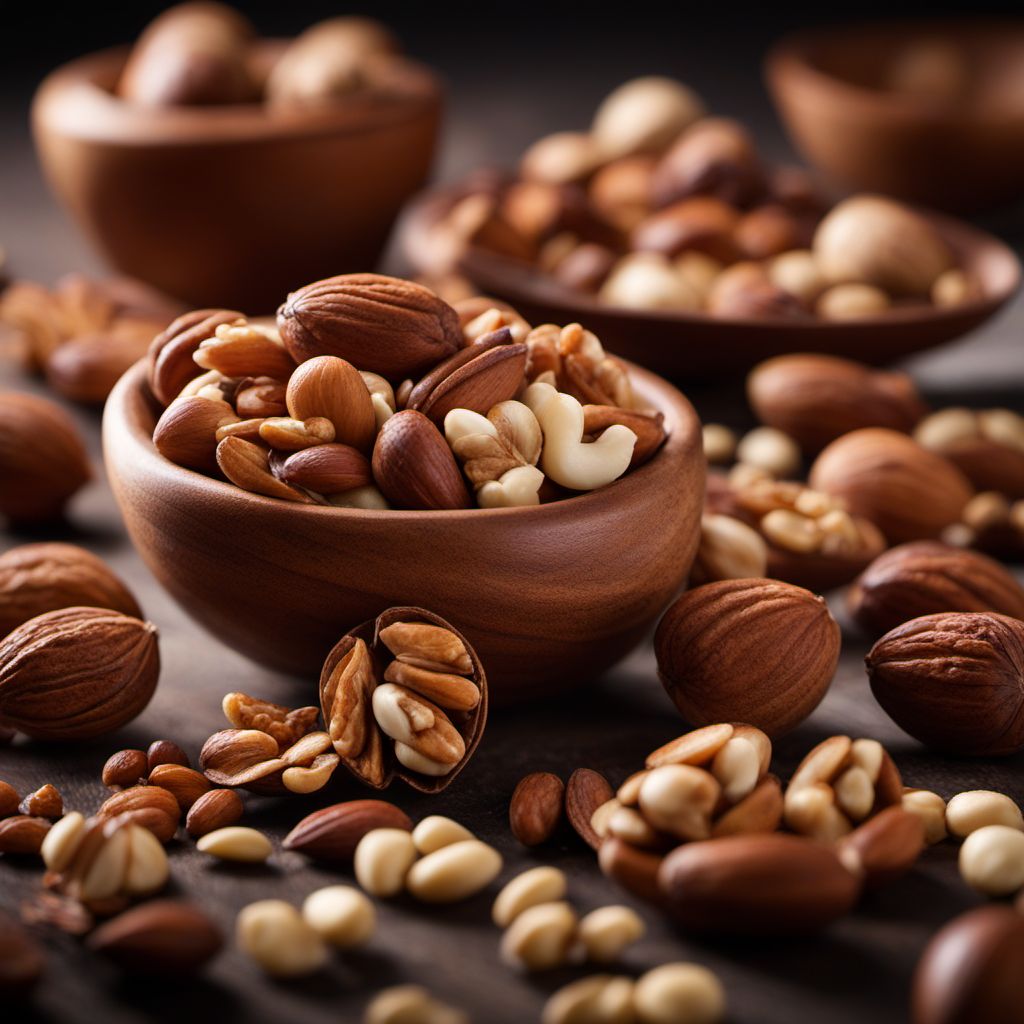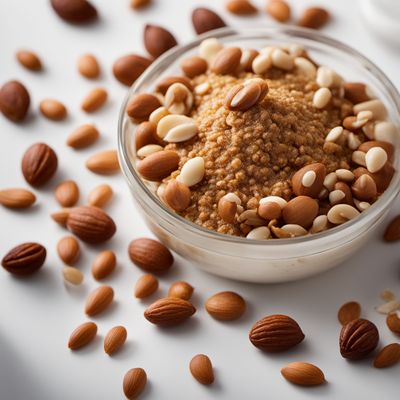
Ingredient
Primary derivatives from nuts and similar seeds
The Nutty World of Culinary Delights
Nuts and seeds are essential ingredients in various cuisines, offering a wide range of flavors, textures, and nutritional benefits. From creamy almond butter to crunchy sesame seeds, these ingredients add depth and richness to both sweet and savory dishes.
Origins and history
Nuts and seeds have been a part of human diets for thousands of years, with evidence of their consumption dating back to ancient civilizations. They are found in various regions around the world and have played significant roles in different cultures and cuisines. These ingredients come in different shapes, sizes, and flavors, ranging from the mild sweetness of almonds to the rich earthiness of walnuts. With their diverse culinary applications, nuts and seeds continue to be cherished ingredients in modern cooking.
Nutritional information
Nuts and seeds are packed with essential nutrients, including healthy fats, protein, fiber, vitamins, and minerals. They are a great source of energy and can contribute to heart health, brain function, and overall well-being. However, it's important to note that nuts and seeds are also high in calories, so portion control is key when incorporating them into a balanced diet.
Allergens
Nuts and seeds can be allergenic for some individuals, particularly those with tree nut allergies. Common allergenic nuts include almonds, cashews, walnuts, and pistachios. Sesame seeds can also cause allergic reactions in some people. It's crucial to be aware of these allergens and take necessary precautions when using or consuming these ingredients.
How to select
When selecting nuts and seeds, look for ones that are fresh, without any signs of mold, rancidity, or insect damage. They should have a pleasant aroma and a crisp texture. If buying shelled nuts, ensure that the shells are intact and not cracked. For seeds, opt for those that are whole and not broken. Additionally, consider purchasing organic or sustainably sourced nuts and seeds to support environmentally friendly practices.
Storage recommendations
To maintain the freshness and quality of nuts and seeds, store them in airtight containers in a cool, dry place, away from direct sunlight. Refrigeration can help extend their shelf life, especially for nuts that have a higher fat content. However, be cautious as some nuts, like almonds, can absorb odors from other foods in the fridge. Freezing nuts and seeds is also an option to prolong their freshness, but ensure they are properly sealed to prevent moisture absorption.
How to produce
Growing nuts and seeds requires specific conditions and expertise, making it more suitable for commercial cultivation. However, some nuts and seeds, such as sunflower seeds or pumpkin seeds, can be grown in home gardens with proper care and attention. Research the specific requirements of the chosen nut or seed variety, including soil type, sunlight, and watering needs, to ensure successful cultivation.
Preparation tips
Nuts and seeds can be enjoyed in various ways, such as raw, roasted, or ground into spreads like nut butter. They can be used as toppings for salads, oatmeal, or yogurt, or incorporated into baked goods, granola bars, and trail mixes. Toasting nuts and seeds enhances their flavors and adds a delightful crunch to dishes. Additionally, they can be ground and used as a gluten-free alternative in baking or as a coating for proteins.
Culinary uses
Nuts and seeds are widely used in both sweet and savory dishes across different cuisines. They are commonly found in desserts like cakes, cookies, and pastries, as well as in savory dishes like salads, stir-fries, and nut-crusted meats. Nuts and seeds are also popular ingredients in Middle Eastern, Mediterranean, and Asian cuisines, where they are used in dishes like hummus, tahini, pesto, and curries.
More ingredients from this category

Candied or sugar preserved nuts
Sweet Delights: Exploring the World of Candied Nuts

Nut/seeds paste/emulsion/mass
The Creamy Delight of Nut and Seed Pastes

Dried nuts/seeds and related flours and powders
Nature's Nutty Treasures: Exploring the World of Dried Nuts, Seeds, and their Versatile Flours and Powders